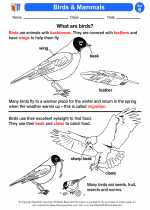Galaxies
A galaxy is a huge collection of gas, dust, stars, and other celestial bodies that are held together by gravity. These massive formations can contain millions or even billions of stars, along with planets, nebulae, and other cosmic elements.
Types of Galaxies
There are three main types of galaxies:
- Spiral Galaxies: These galaxies have a spiral shape with long arms that wrap around a central bulge. Our Milky Way is an example of a spiral galaxy.
- Elliptical Galaxies: These galaxies have an elliptical or oval shape and contain mostly older stars. They have less interstellar matter and are generally not actively forming new stars.
- Irregular Galaxies: These galaxies have a more chaotic and irregular shape. They often contain young stars and are often found in the vicinity of larger galaxies.
Studying Galaxies
Astronomers study galaxies using telescopes and other instruments to observe their structure, composition, and movement. They also use a variety of techniques, such as spectroscopy and photometry, to analyze the light emitted by galaxies and learn about their properties.
Galaxy Formation
Galaxies are thought to have formed from the gravitational collapse of clouds of gas and dust in the early universe. Over time, these collapsed regions gave rise to the diverse range of galaxies that we observe today.
Fun Facts
- The Milky Way is a barred spiral galaxy, which means it has a central bar-shaped structure in addition to its spiral arms.
- Galaxies can collide and merge with each other, leading to the formation of new, larger galaxies.
- The Andromeda Galaxy, located about 2.537 million light-years from Earth, is the closest spiral galaxy to the Milky Way.
Study Guide: Galaxy
Here are some key points to remember about galaxies:
.◂Science Worksheets and Study Guides Second Grade. Mammals and birds

 Activity Lesson
Activity Lesson
 Worksheet/Answer key
Worksheet/Answer key
 Worksheet/Answer key
Worksheet/Answer key
 Worksheet/Answer key
Worksheet/Answer key
 Worksheet/Answer key
Worksheet/Answer key
 Vocabulary/Answer key
Vocabulary/Answer key
